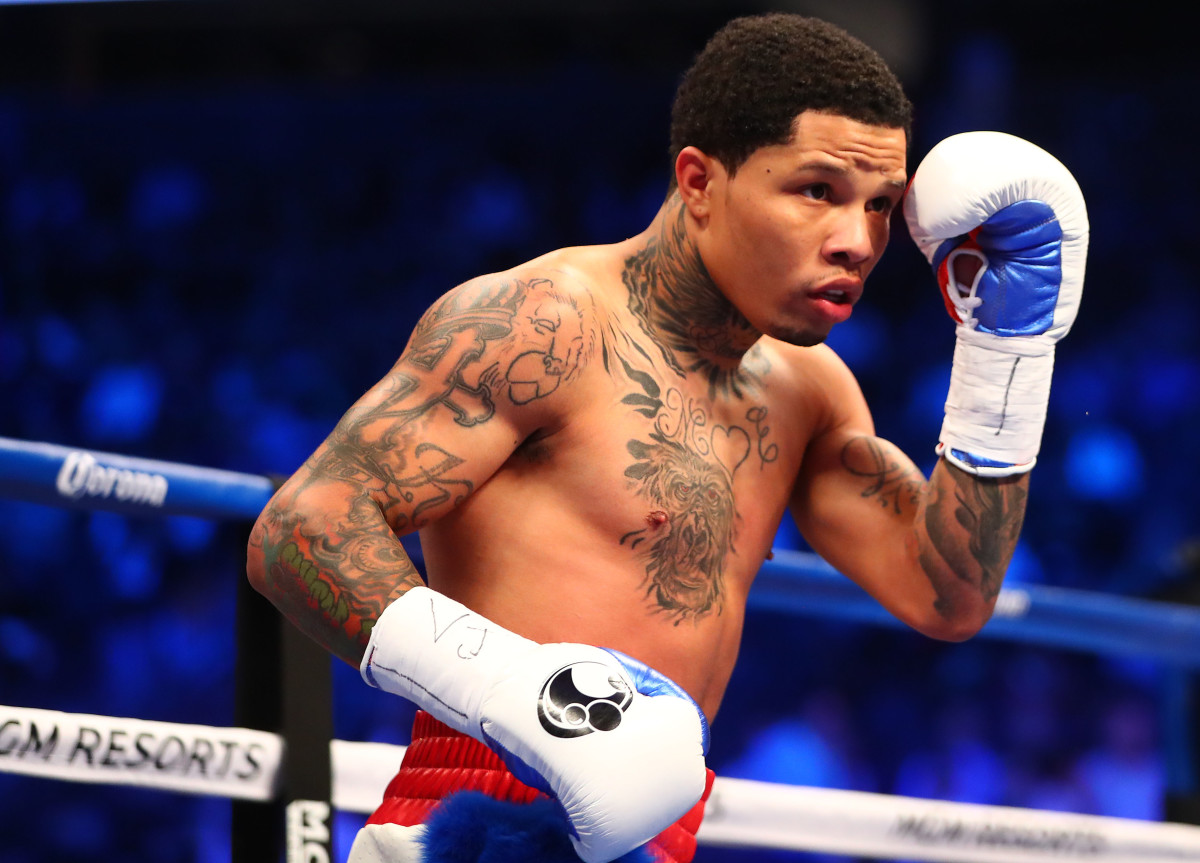Everyone Wins With the Gervonta Davis–Ryan Garcia Agreement
Last week, the news that Gervonta Davis and Ryan Garcia had agreed on a deal to meet in 2023 reverberated through boxing—not just because Davis and Garcia had come to terms, but because competing promoters and networks had found a workable agreement, too.
Among the issues that have caused boxing to lose the mainstream foothold it once held is that the sport has become fractured. Promoters have aligned themselves with specific networks, effectively tying their stable of fighters to them. Premier Boxing Champions, the Al Haymon–operated company, works primarily with Showtime and Fox. Top Rank, founded by Bob Arum, has an output deal with ESPN. Matchroom Boxing, led by Eddie Hearn, and Oscar De La Hoya’s Golden Boy Promotions have contracts with DAZN.
This siloing of fighters has often been an immovable obstacle in the way of boxing’s biggest fights. Floyd Mayweather, who was advised by Haymon, and Manny Pacquiao, a longtime Top Rank fighter, spent years squabbling before eventually meeting at the end of their careers. Deontay Wilder, a PBC-aligned heavyweight, and Anthony Joshua, who works with Matchroom, failed to reach an agreement in 2019, when both were at the peak of their powers. More recently, a compelling middleweight matchup between Jermall Charlo and Jaime Munguia was scrapped over network issues.
“Everyone is killing each other to make you believe you can create three separate entities and have high-quality fights,” says veteran promoter Lou DiBella. “There has got to be some rationality. If you are not willing to cross over you are going to have a watered-down s--- product.”

When networks and promoters do work together, the results are routinely positive. The 2015 showdown between Mayweather and Pacquiao, co-produced and distributed by HBO and Showtime, generated 4.6 million in pay-per-view buys and more than $600 million in revenue. The last two fights between Wilder and Tyson Fury were joint Showtime and ESPN productions—and delivered a pair of the most compelling heavyweight matches in recent memory.
So why, with that history of success, does boxing not see more collaborations? Two reasons, says Mark Taffet, a former HBO Sports executive. Ego, says Taffet, is the bad reason. Promoters often entertain delusions that they can take over the sport and are reluctant to cut a deal that might benefit a rival. In 2015, Haymon attempted to harness the power of network television deals—including NBC, CBS and Fox—to become an industry leader similar to UFC. Today, PBC remains a formidable presence but now works primarily with Showtime, with FOX producing an occasional pay-per-view. In 2018, Hearn touted a “historic” $1 billion deal with DAZN with plans to penetrate the U.S. market and make the streaming service “the home of boxing.” Four years later Hearn has pivoted to a more global approach with a smaller footprint of U.S. fighters.
Says DiBella, “Only when [promoters and fighters] realize they have little other choice do these fights happen.”
There is a good reason, says Taffet. Networks are under pressure to deliver on “brand promises.” When a fight landed on HBO, the network was able to deliver a significant matchup for its subscribers. When a fight was distributed by HBO PPV, subscribers would get pre-fight programming like HBO’s reality series 24/7 and the ability to watch a replay of the fight on the network a week later. For example: The replay of the fourth fight between Manny Pacquiao and Juan Manuel Marquez, which Marquez won by dramatic knockout, drew an audience of 1.3 million a week after it was shown live on pay-per-view. Working with another broadcaster, says Taffet, can limit what a network can do. “You have got to give people a reason to stay with you,” says Taffet. “You have got to deliver for your brand.”
Smaller pay-per-views—like one between Munguia and Charlo—are less likely to happen. There is little brand benefit, says Taffet. For smaller shows, networks often want promoters to stand up and be loyal to the company that is bankrolling them. If a network routinely signs off on smaller joint pay per views, promoters will push for more of them instead of fighting to make big fights for their network. “Guys like Arum and Haymon, they know leverage,” says Taffet. “They see a network that always gives in, they will take advantage of it … and ultimately they don’t want that. Because that’s why networks get out of boxing, if there is no branding. Promoters would lose in the end.”
Davis-Garcia is a collaboration between longtime rivals Haymon and Mayweather Promotions (which represents Davis) and Golden Boy (which represents Garcia). While Showtime, which has televised Davis’s last 11 fights, and DAZN, which has aired Garcia’s last seven, negotiated an agreement, the fight will not be a jointly produced pay-per-view. Showtime will produce and distribute it. In return for waiving its broadcast rights to Garcia in the U.S., DAZN (disclaimer: I am an on-air broadcaster with DAZN), subject to contracts, will be paid a seven-figure fee and retain the ability to sell the fight as a pay-per-view on the platform.
For a flagging sport, more collaboration may be the only way to revive it. “Everyone is in the s------,” says DiBella. “We need to collectively get ourselves out of the s------.” And there is plenty to be done. Wilder-Joshua remains marketable. Munguia-Charlo, too. Davis could face the winner of the planned Top Rank–promoted show featuring undisputed lightweight champion Devin Haney and Vasyl Lomachenko. At 140-pounds, Garcia could take on Arum-promoted Teofimo Lopez.
It starts with Davis and Garcia, a fight that, it should be noted, remains unsigned and subject to both winning interim fights in January. Davis has already drawn seven-figure gates in New York, Atlanta and Los Angeles. Garcia, with more than nine million followers on Instagram, has attracted sizeable crowds in southern California and Texas and brings with him a young fan base. Industry experts expect the fight to deliver in the neighborhood of an eight-figure gate in Las Vegas with pay-per-view buys that could approach 500,000. Successful pay-per-views happen, says Taffet, when fights hit big outside of the core fan base. Davis and Garcia have the potential to do that.
The big winner, though, will be boxing. Fans have become conditioned to expect negotiations for big fights to fail, as it did recently with Terence Crawford and Errol Spence. They have become accustomed to fighters clashing more on social media than they do in the ring. Davis and Garcia will draw a lot of eyeballs to boxing, and it has the potential to be a dynamic fight. “In today’s splintered environment, when you have a chance to make a big fight, you have to,” says Taffet. “You can’t keep disappointing consumers. You have to make big fights.”
More Boxing Coverage:
